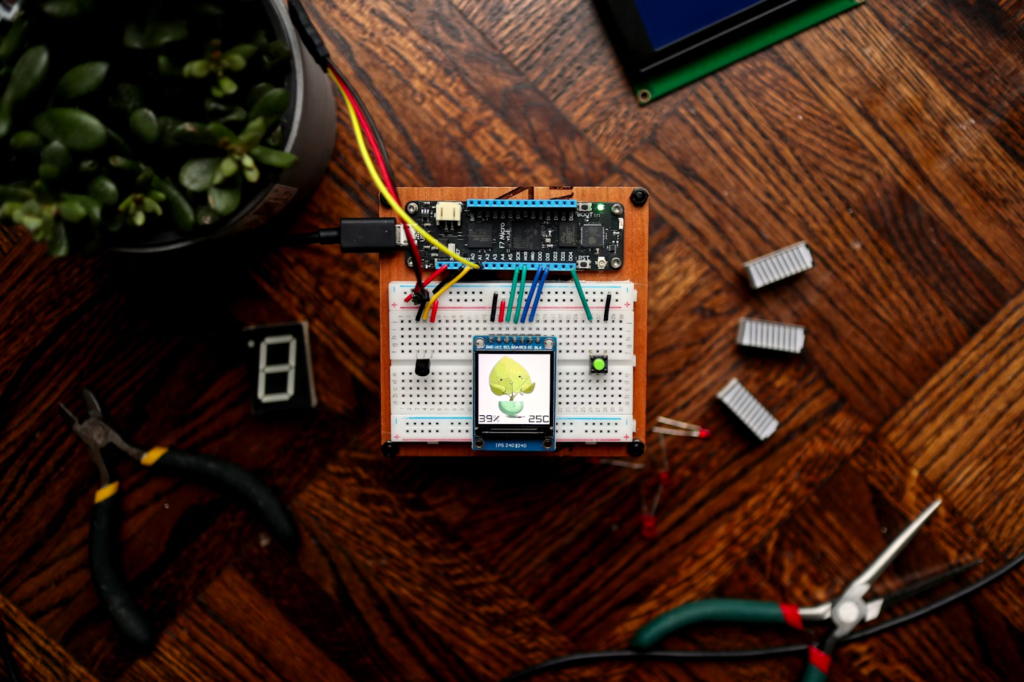Managing prediabetes involves making healthier food choices and creating a balanced, sustainable diet plan to help prevent the onset of type 2 diabetes. Thankfully, technology has made it easier than ever to monitor your calorie intake. Apps like Calorie Counter and Calorie AI are changing the way we think about nutrition by providing real-time analysis and tailored recommendations. Let’s explore how you can successfully manage prediabetes through your diet, beginning with a clear understanding of what that diet should entail.
What is The Prediabetes Diet?
When managing prediabetes, the goal is to focus on foods that stabilize blood sugar and reduce the risk of developing type 2 diabetes. A key part of this strategy is using a calorie counter to track your food intake and make informed choices about portion sizes and the quality of your meals. The prediabetes diet focuses on incorporating high-fiber foods, lean proteins, and healthy fats, while reducing refined carbohydrates and sugary snacks. Utilizing tools such as a calorie tracker makes it simpler to keep an eye on your calorie intake and make sure you’re staying within healthy boundaries.
Understanding the Link Between Prediabetes and Diet
Your diet is vital for managing prediabetes. Prediabetes happens when your body either resists insulin’s effects or doesn’t produce enough of it to keep blood sugar levels normal. Choosing the right foods can help control blood sugar, enhance insulin sensitivity, and lower inflammation. By monitoring your meals, you can spot patterns and make necessary changes to boost your health. Utilizing a calorie tracker can simplify this process, offering valuable insights into what works for you and what doesn’t.
How Diet Affects Insulin Sensitivity
The food you consume can significantly affect your insulin sensitivity. A diet that includes whole grains, plenty of vegetables, and lean proteins can help keep blood sugar levels stable and enhance insulin response. Conversely, a diet loaded with processed foods, sugary treats, and refined carbs can lead to blood sugar spikes and worsen insulin resistance.
The Role of Fiber in Blood Sugar Control
Fiber is crucial for slowing the absorption of sugar into the bloodstream, which helps keep blood sugar levels stable. Foods that are high in fiber, like vegetables, legumes, and whole grains, are vital components of a prediabetes diet. Adding fiber-rich foods to your meals can also assist with weight management, an important aspect of managing prediabetes.
Healthy Fats vs. Unhealthy Fats
Not all fats are the same. Healthy fats, such as those in avocados, olive oil, and fatty fish, can help lower inflammation and enhance heart health—both essential for managing prediabetes. Conversely, trans fats and high amounts of saturated fats can raise insulin resistance, so it’s important to limit them in your diet.
The Importance of Portion Control
Even healthy foods can lead to weight gain if consumed in large quantities. Practicing portion control and utilizing tools like a calorie tracker can assist you in managing your portions and preventing overeating. Keeping track of your meals also helps ensure that you’re not exceeding your calorie intake, which could result in weight gain and increased insulin resistance.
How to Create a Scientific Meal Plan for Prediabetes Prevention
Creating a scientific meal plan involves more than just picking the right foods—it requires tracking your food intake and making sure your meals align with your health goals. Using a calorie tracker makes this process much easier by providing real-time feedback on the foods you’re eating, helping you stay on top of your calorie count and nutrition.
When planning your meals, aim to include a good mix of macronutrients—complex carbohydrates, lean proteins, and healthy fats. Utilize the information from your calorie AI to modify portion sizes according to your activity level and weight management objectives. A thoughtfully designed meal plan will help keep your blood sugar levels steady and support your efforts to maintain a healthy weight.
Top 10 Foods to Include in Your Prediabetes Diet
Eating the right foods is crucial for managing prediabetes. Here are 10 nutrient-packed options that will help stabilize your blood sugar and improve your overall health:
- Leafy Greens: Spinach, kale, and other greens are rich in fiber and low in calories, making them excellent for managing blood sugar levels.
- Whole Grains: Brown rice, quinoa, and oats are sources of fiber and complex carbohydrates that help prevent spikes in blood sugar.
- Fatty Fish: Salmon, mackerel, and sardines are packed with healthy omega-3 fatty acids, which can reduce inflammation and support heart health.
- Legumes: Beans, lentils, and chickpeas are high in both fiber and protein, aiding in the regulation of blood sugar levels.
- Berries: Blueberries, strawberries, and raspberries are full of antioxidants and have a lower glycemic index than many other fruits.
- Nuts and Seeds: Almonds, walnuts, chia seeds, and flaxseeds offer healthy fats, fiber, and protein.
- Greek Yogurt: With low sugar content and high protein, Greek yogurt is a great choice for managing blood sugar while keeping you full.
- Sweet Potatoes: A nutritious alternative to white potatoes, sweet potatoes are complex carbohydrates that are high in fiber and vitamins.
- Avocados: Rich in healthy fats and fiber, avocados can help reduce bad cholesterol and enhance insulin sensitivity.
- Cinnamon: Incorporating cinnamon into your meals may help regulate blood sugar and boost insulin sensitivity.
Common Mistakes People Make on a Prediabetes Diet
When managing prediabetes, it’s easy to make mistakes, especially if you’re not tracking your food intake properly. Here are some common errors to avoid:
- Overlooking Portion Sizes: Even nutritious foods can lead to weight gain if portion sizes aren’t monitored.
- Skipping Meals: Missing meals can result in overeating later and can throw off your blood sugar levels
- Relying Too Much on Processed “Diet” Foods: Many so-called diet foods contain artificial ingredients that can upset your blood sugar balance.
- Not Tracking Calories: Without tools like a calorie tracker, it’s challenging to monitor your actual intake and make necessary changes.
- Neglecting Healthy Fats: Completely cutting out fats is a mistake. Healthy fats are crucial for hormone regulation and maintaining insulin sensitivity.
- Focusing Too Much on Carbs: While it’s important to limit carbs, solely concentrating on reducing them can lead to nutrient deficiencies. Balance is essential.
Expert Tips on Building a Sustainable Diet for Prediabetes Control
Building a sustainable diet for managing prediabetes requires more than just a one-time effort. It’s about developing long-term habits that support your health goals. Here are some expert tips for making it work:
- Use Tools Like Calorie AI: Calorie AI can assist you in tracking your meals and offering personalized insights to help you stay aligned with your goals.
- Stay Consistent with Your Meal Planning: Consistency is crucial. Follow your meal plan, but be open to some flexibility when necessary.
- Focus on Nutrient Density: Focus on foods that are rich in nutrients, providing more vitamins, minerals, and fiber while being lower in calories.
- Incorporate Regular Physical Activity: A balanced diet works best when paired with consistent exercise.
- Listen to Your Body: Be mindful of how your body reacts to various foods and adjust your diet accordingly.
Conclusion
Managing prediabetes through diet involves making thoughtful choices that help keep your blood sugar levels stable and enhance your overall well-being. Utilizing tools like calorie trackers and calorie AI can assist you in monitoring your food intake and making informed decisions to prevent prediabetes from advancing. By prioritizing whole, nutrient-rich foods, controlling portion sizes, and maintaining an active lifestyle, you can greatly lower your chances of developing type 2 diabetes. Take control of your health today and begin creating a diet that suits your needs!






